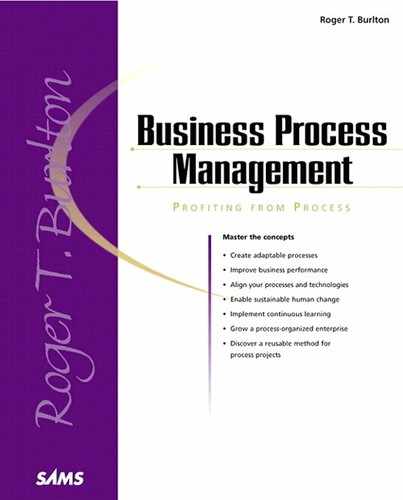Overall Tricks and Traps for the Develop Phase
The Develop phase is usually the period within the Process Management Framework when the majority of time and money are spent. It can also be the point when organizations let up, thinking that they’ve designed the solution so there doesn’t need to be a great amount of attention paid, that everything will work out. Experience has shown that nothing could be farther from the truth. Development and implementation of any one of the change factors is, by itself, a risky proposition. Making all the changes at once isn’t for the faint of heart.
More than anything else, getting through the Develop phase requires exceptional project management skills and a consistent management method for planning, controlling (or continuously improving the project plan), and gaining acceptance (or hand-over) for the results produced. Part of the job of the overall project manager is to ensure that this is happening consistently.
This phase can be managed through a number of distinct programs, each of which can be the responsibility of a special team or teams:
An Information Technology program, incorporating the steps “Build computing infrastructure” and “Develop/integrate technology and systems.” It can operate under the umbrella of a technology organization or as a set of projects.
A Human Resource Transformation program, incorporating the steps “Provide human core capabilities,” “Update HR policies,” and “Develop training capability.” It can operate under the umbrella of a human resources organization or as a set of projects.
A Physical Facilities Design and Construction program incorporating the step “Build physical infrastructures.” It can operate under the umbrella of an engineering, construction, or maintenance organization or as a set of projects.
A Process and Structure program, incorporating “Develop processes, procedures, and rules,” “Redefine jobs,” and “Design organizational changes.” It can operate under the umbrella of a business or process organization or as a set of projects.
Regardless of how the work is structured, each program should have its own clearly accountable project manager/leader, under the direction of an accountable, overall change-program manager. It’s critical that the overall program manager hold regular control sessions to ensure communication and commitment among these subteams.
Creating a dedicated physical project site is recommended to ensure program management coordination. Such a Process Management War Room, houses all the support tools and provides a visible focus for the program’s activities.
Note
The set of measures and incentives for the Develop phase varies from those described in the earlier phases of the Process Management Framework. The Develop phase’s measurements and incentives are typically oriented toward getting the deliverables produced on time, within budget, and to quality standards. They are project and program oriented. This does not mean that the business performance targets are forgotten. They are still the main driver, but every delay because of failure in the Develop phase will rob the organization of the benefits that sold the business case.
It’s not unusual to find that the teams working on these programs also have incentives and rewards built around the delivery process for which they are experts. Although not a process example per se, the general contractor for the rebuilding of the Los Angeles freeways after the most recent major earthquake finished many months early and received several hundreds of millions of dollars in bonuses. The value of the time saved was worth it to the city’s commuters and administrators. Likewise, it’s normal for contract penalties to be incorporated into agreements when outside companies build major components of solutions for large organizations.
